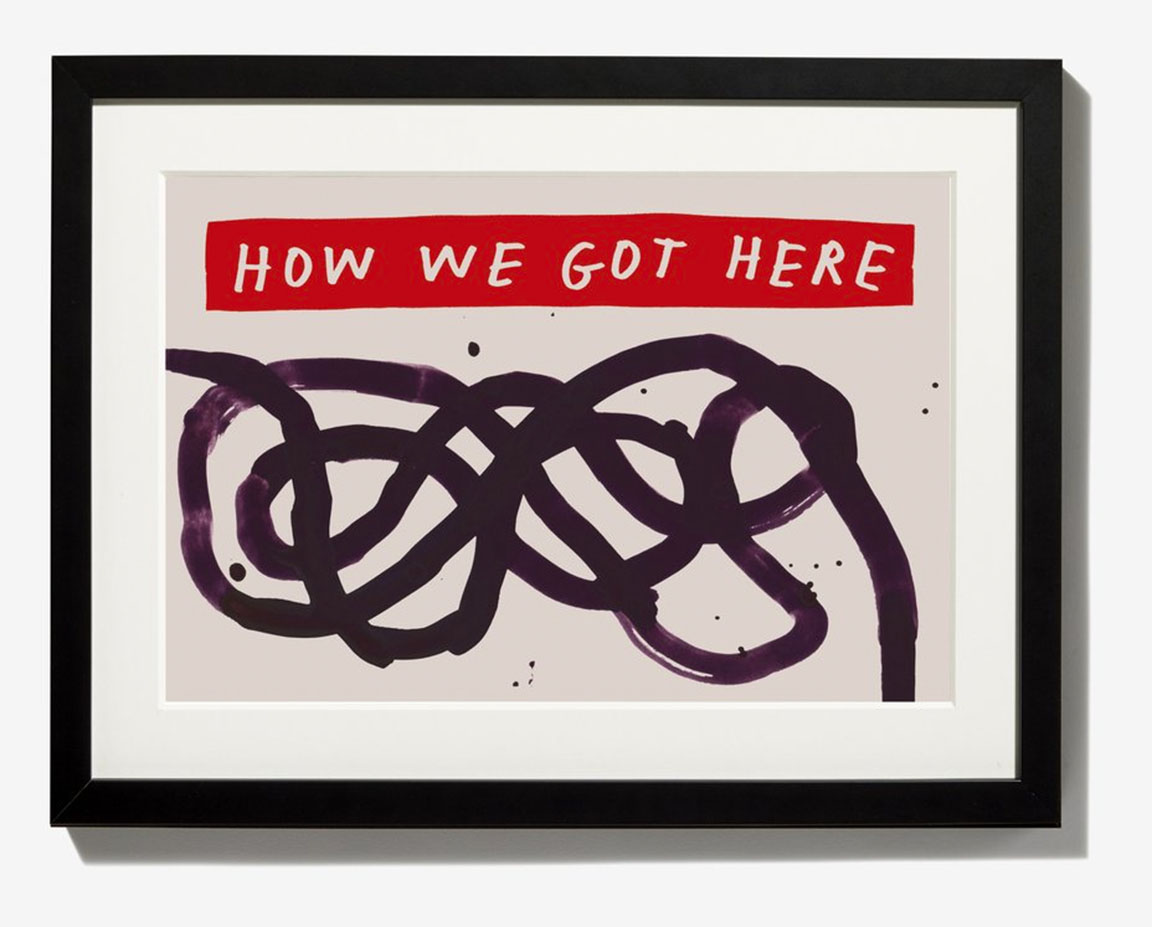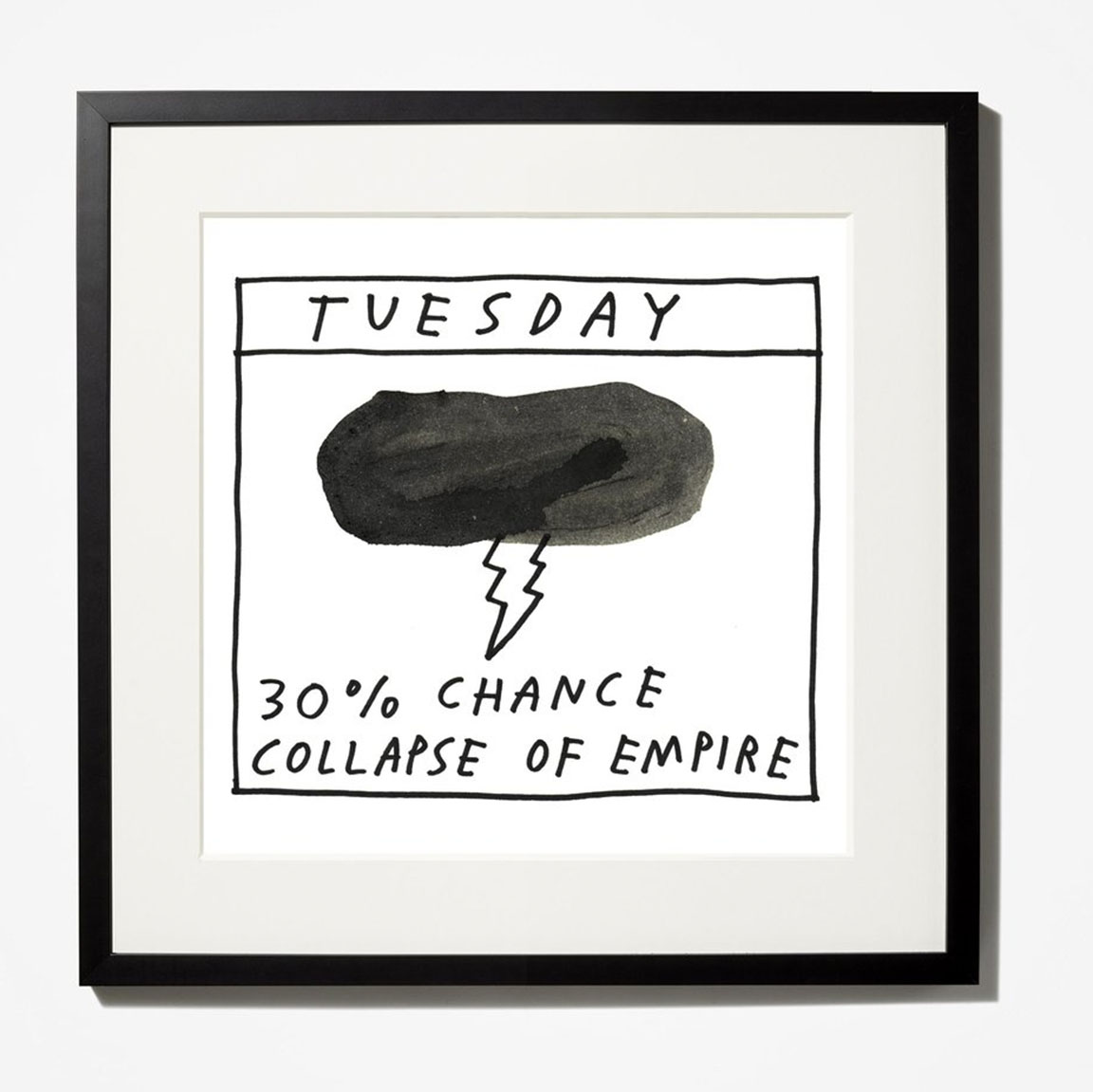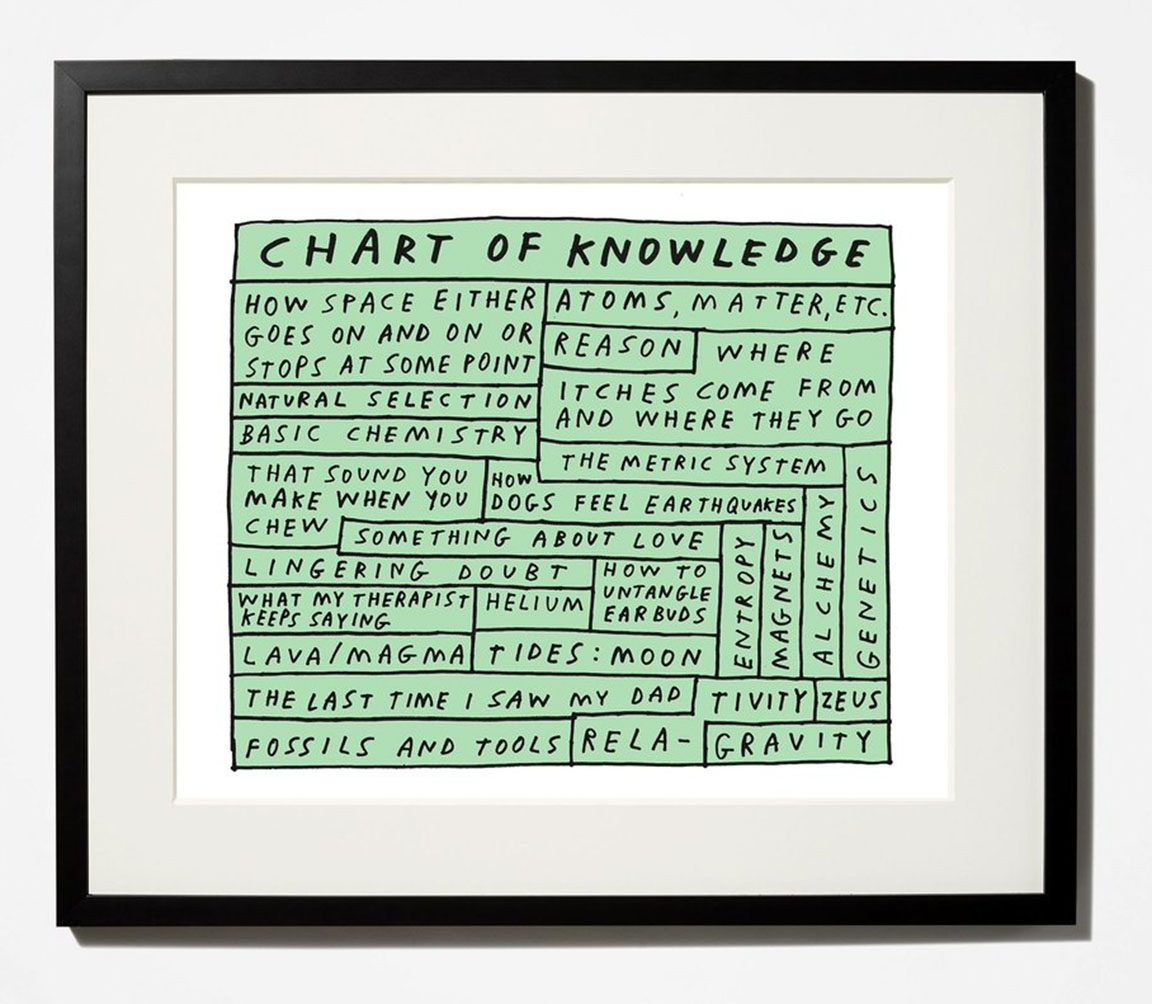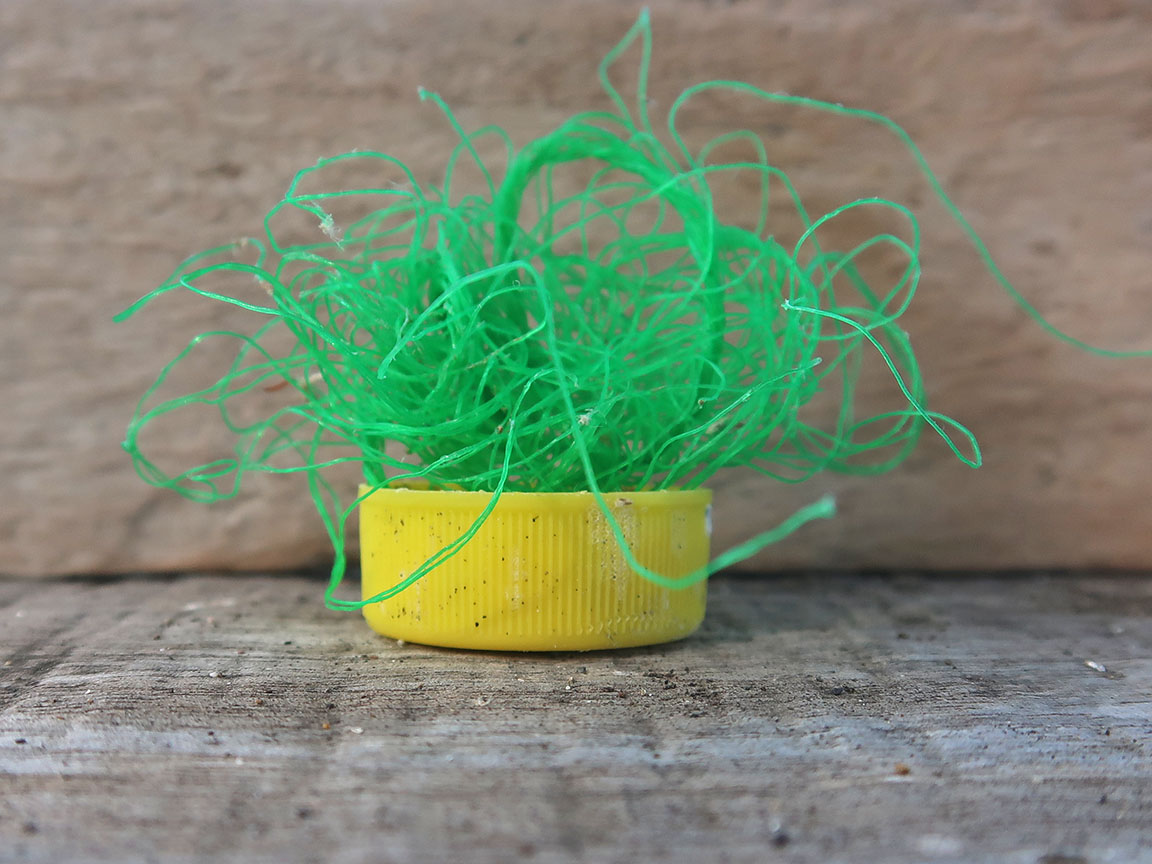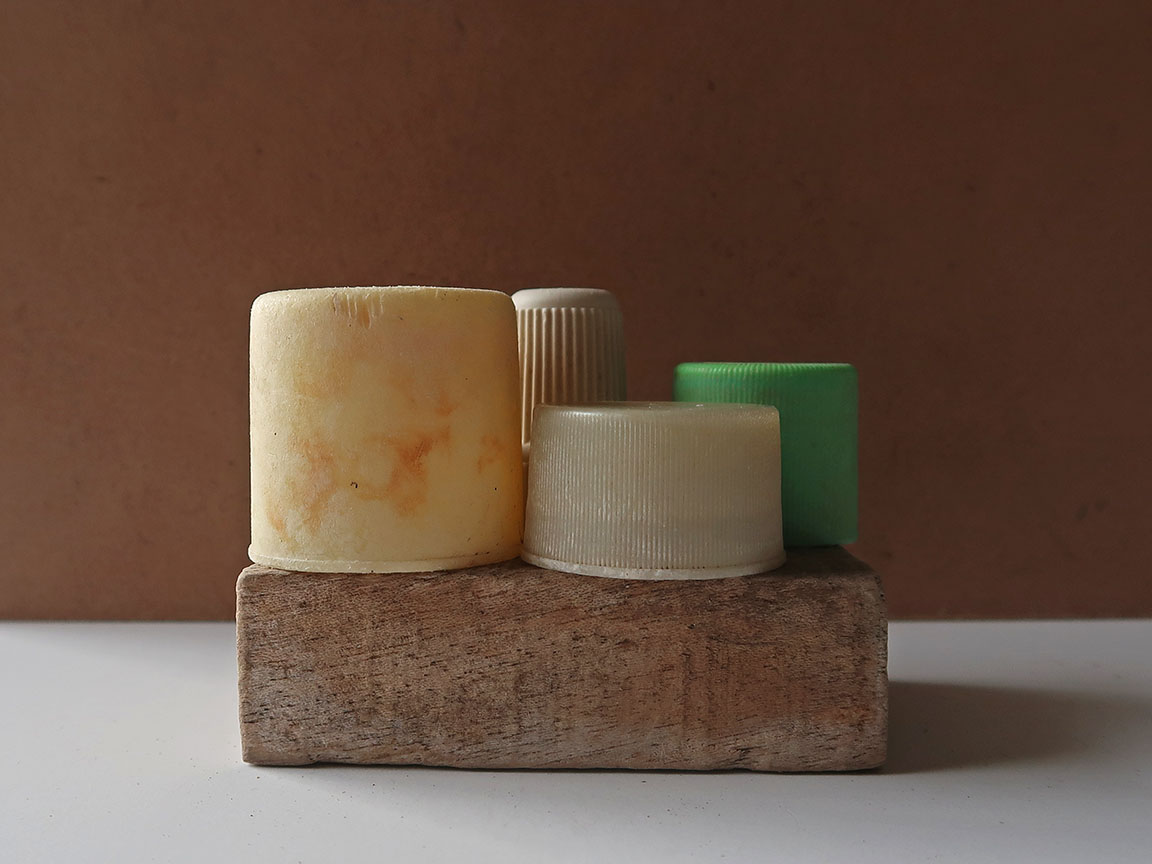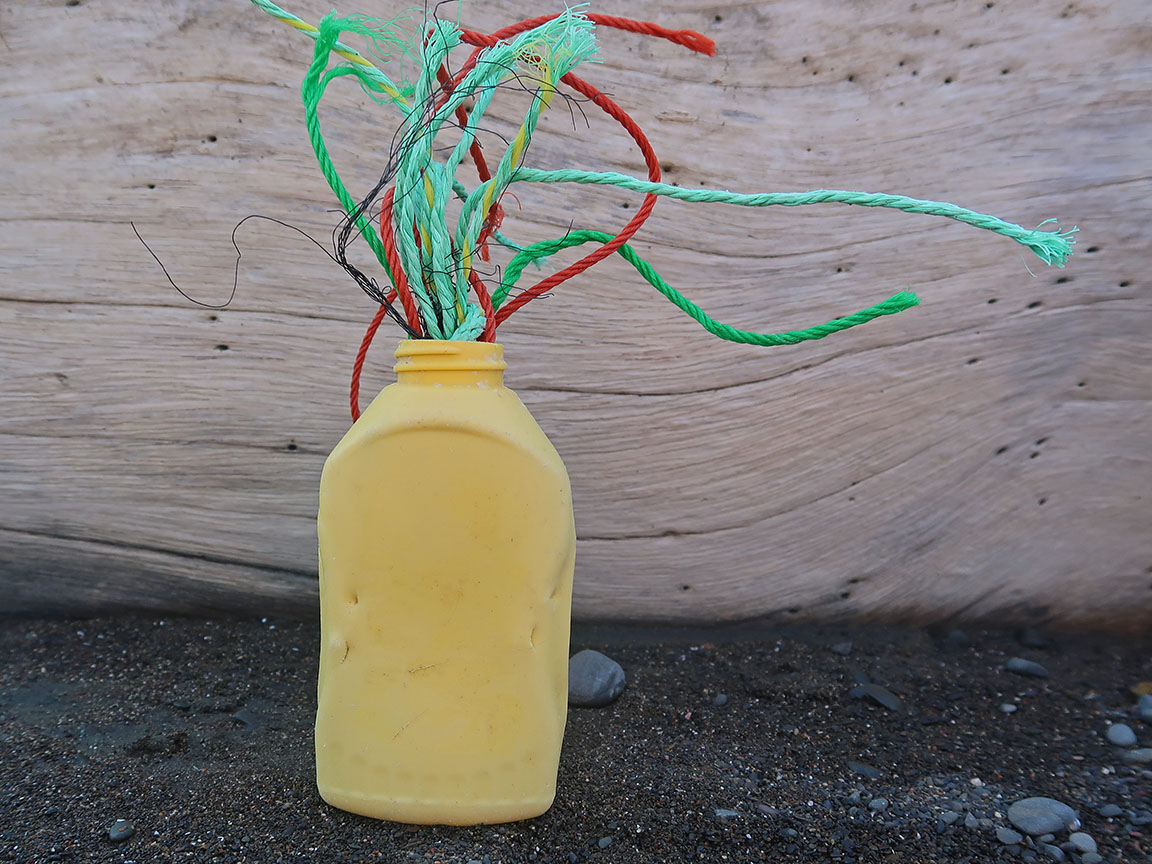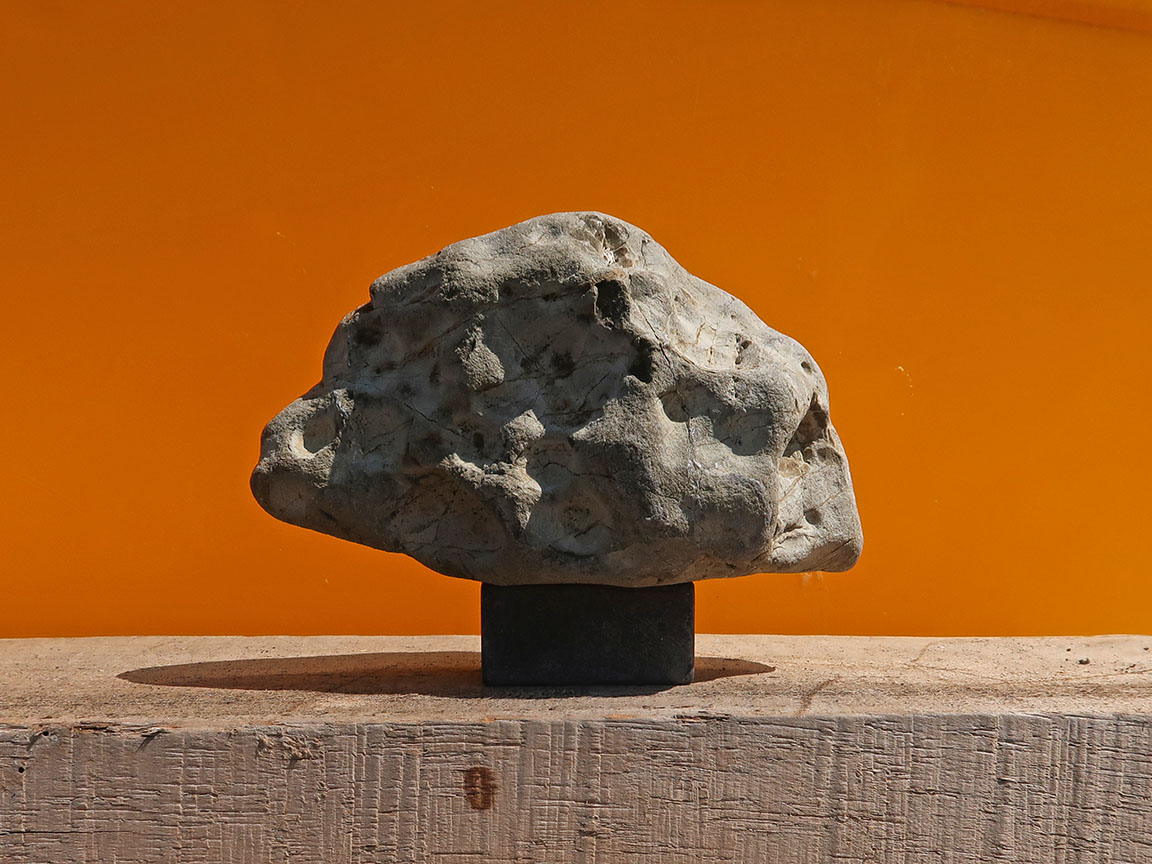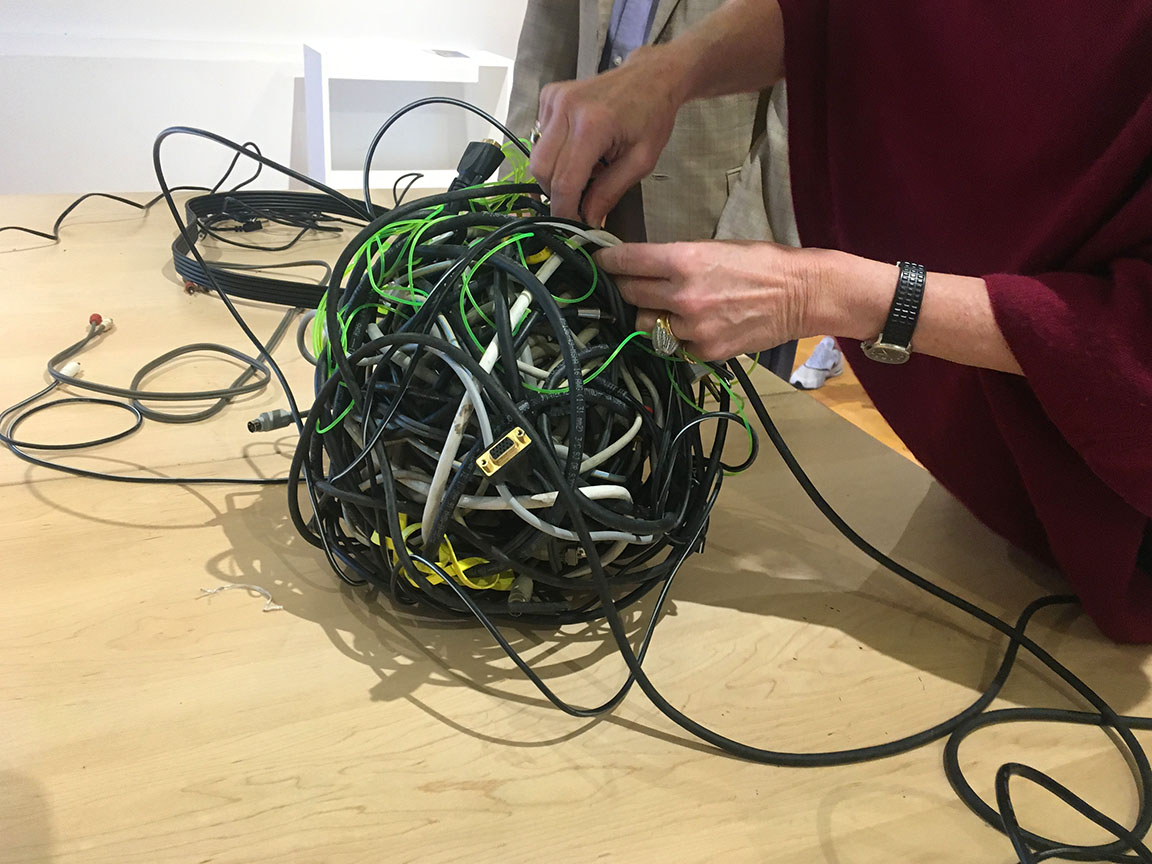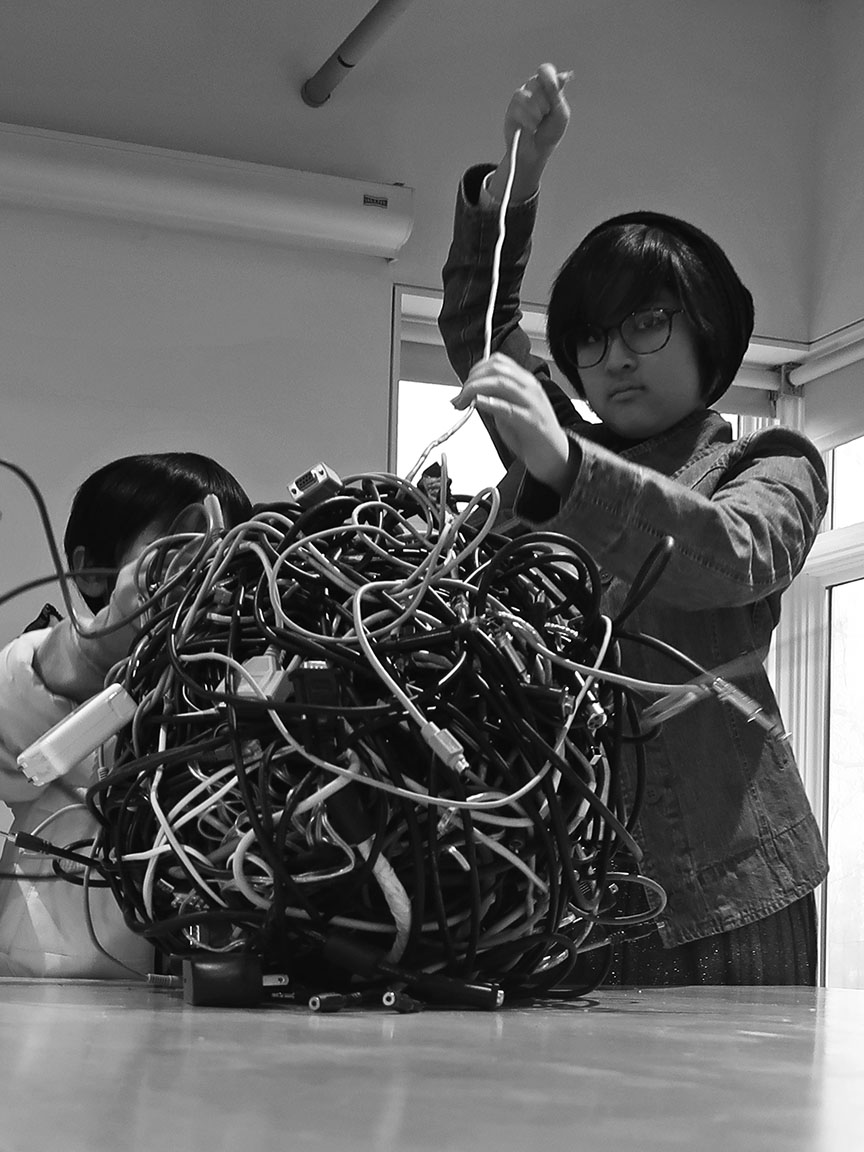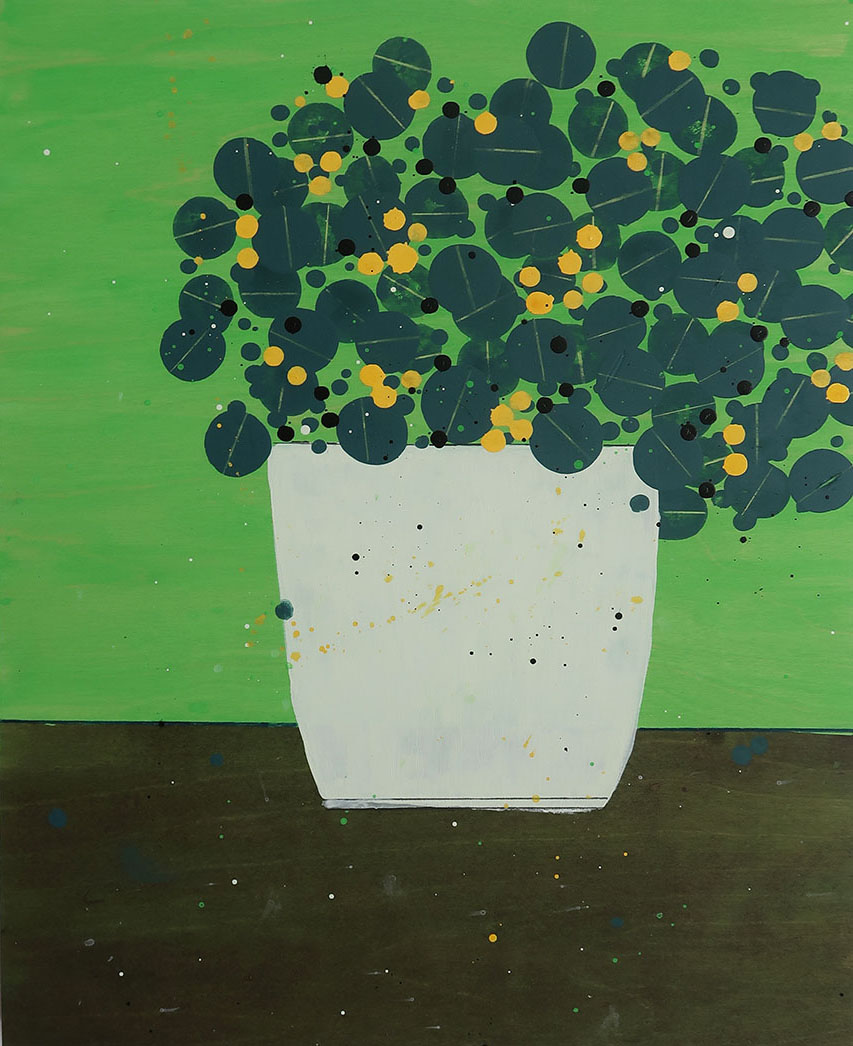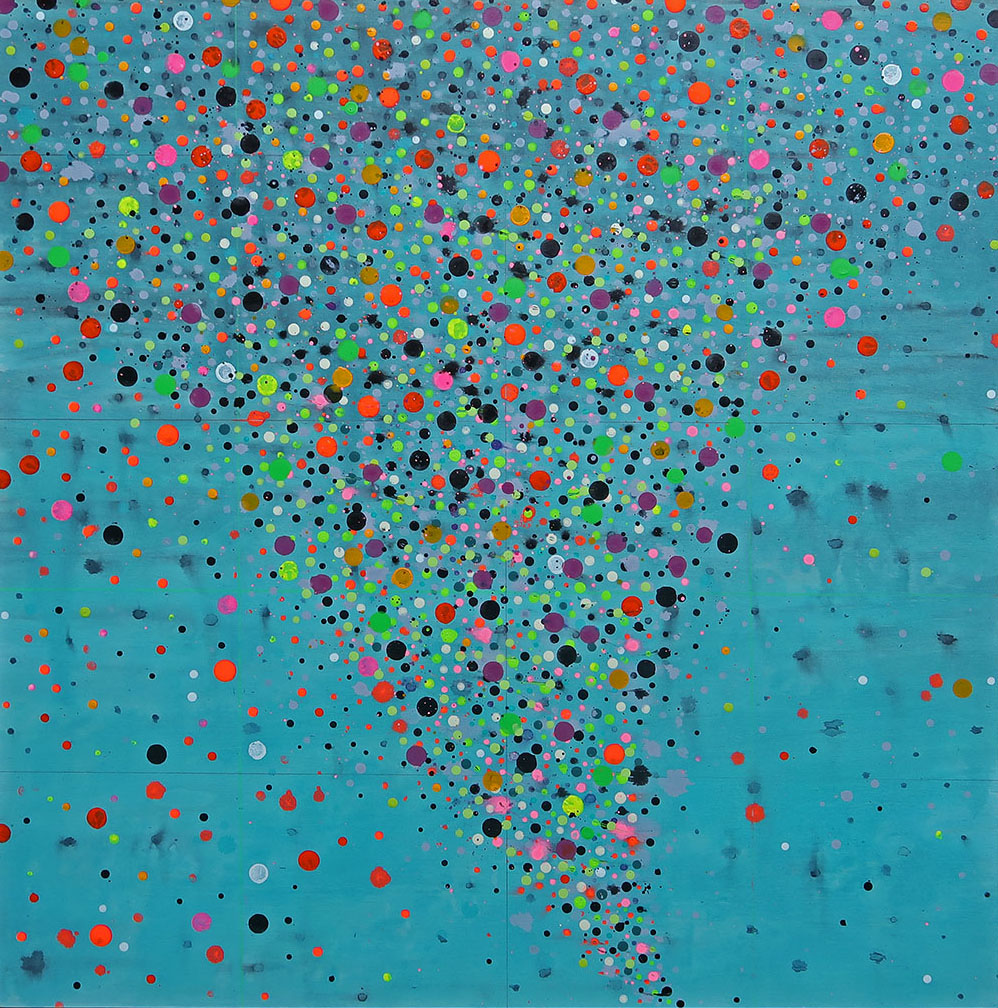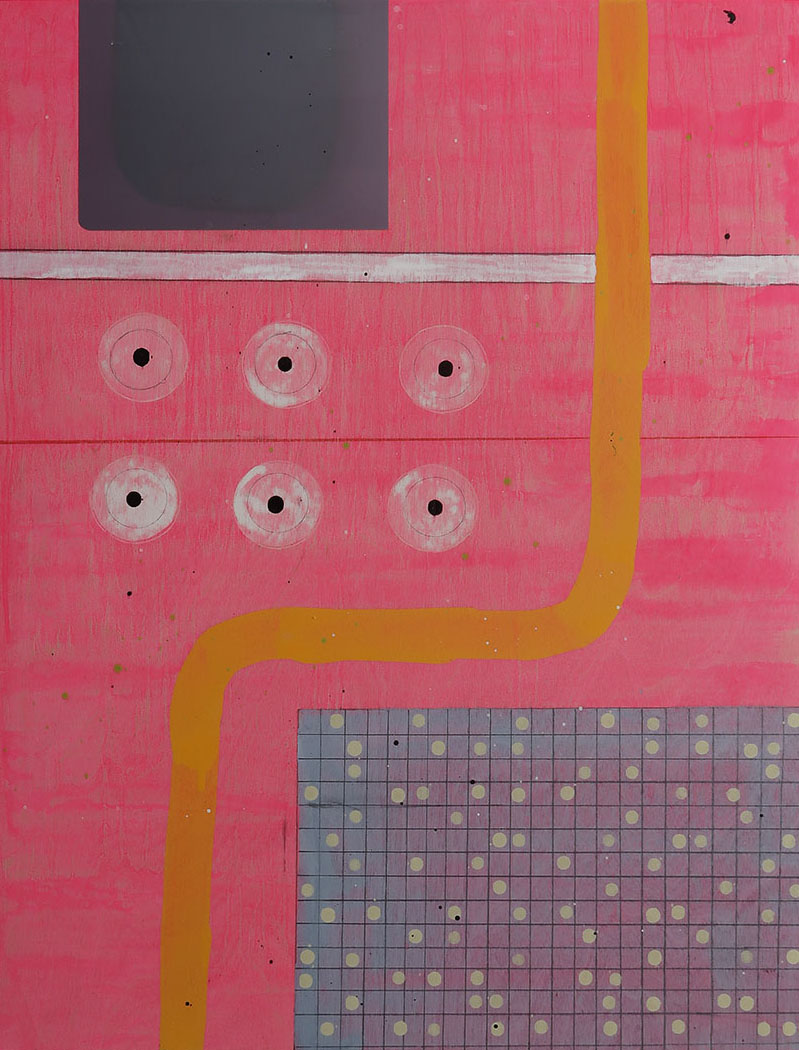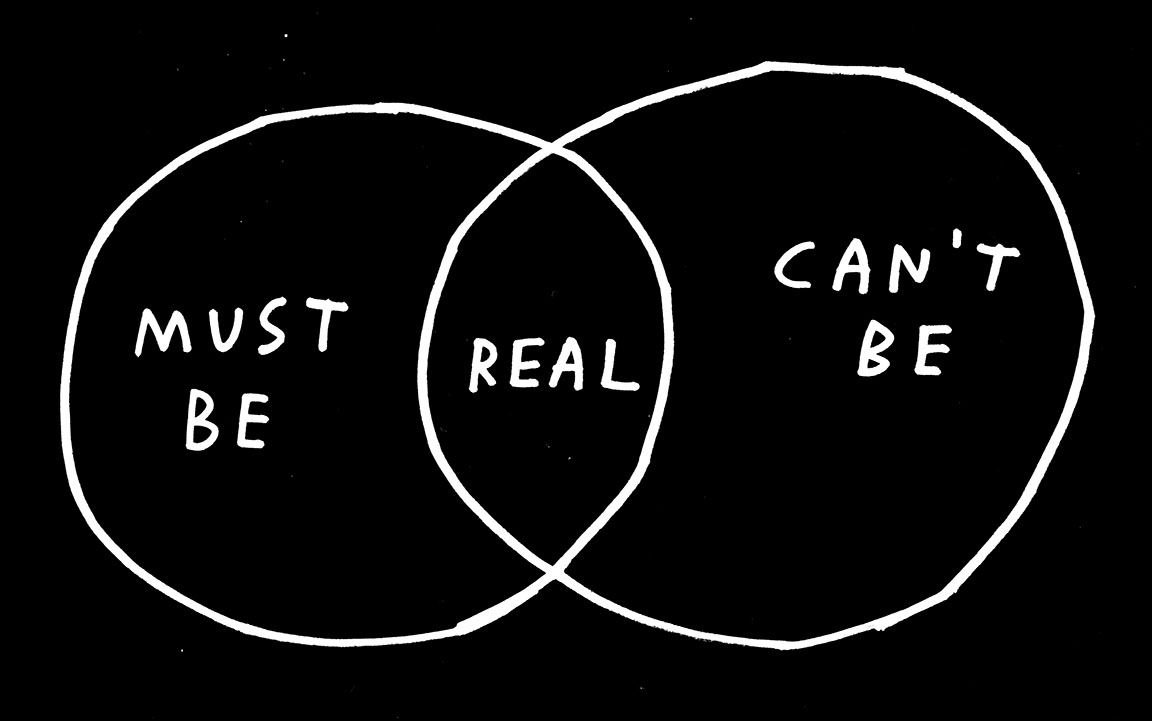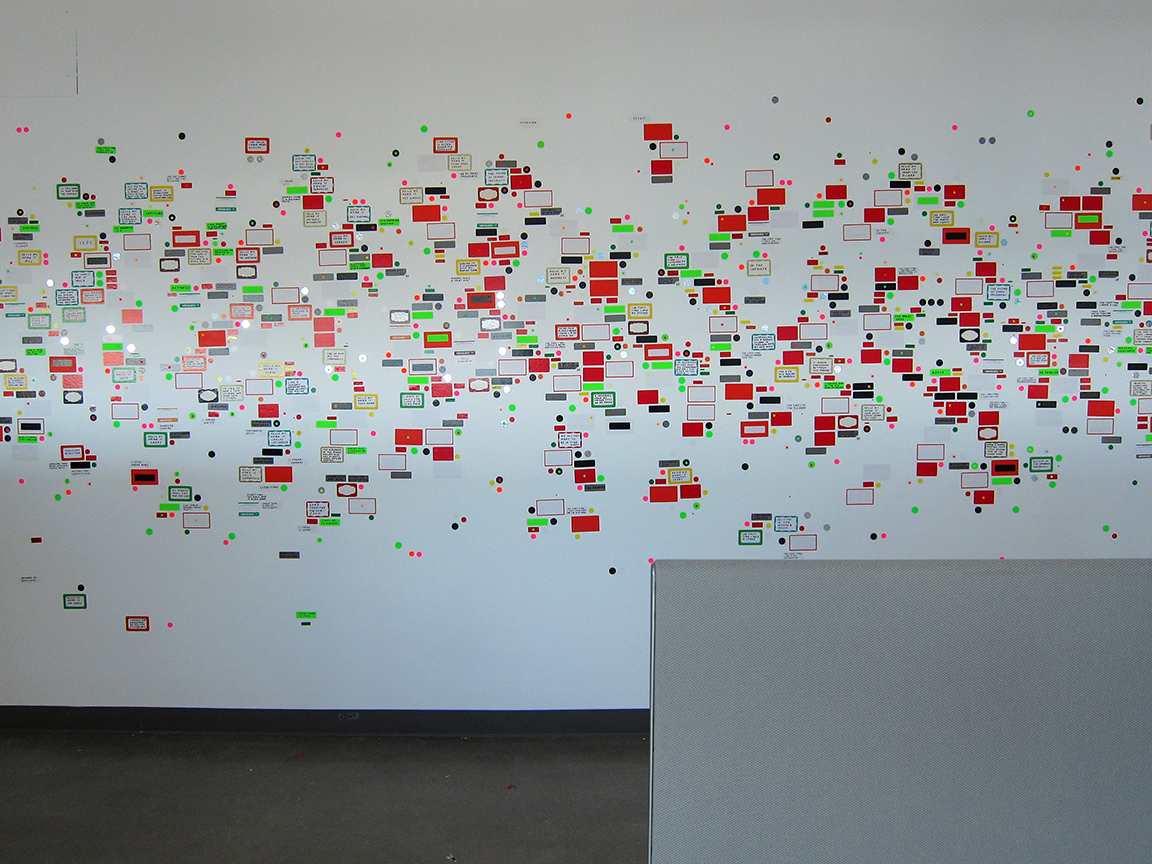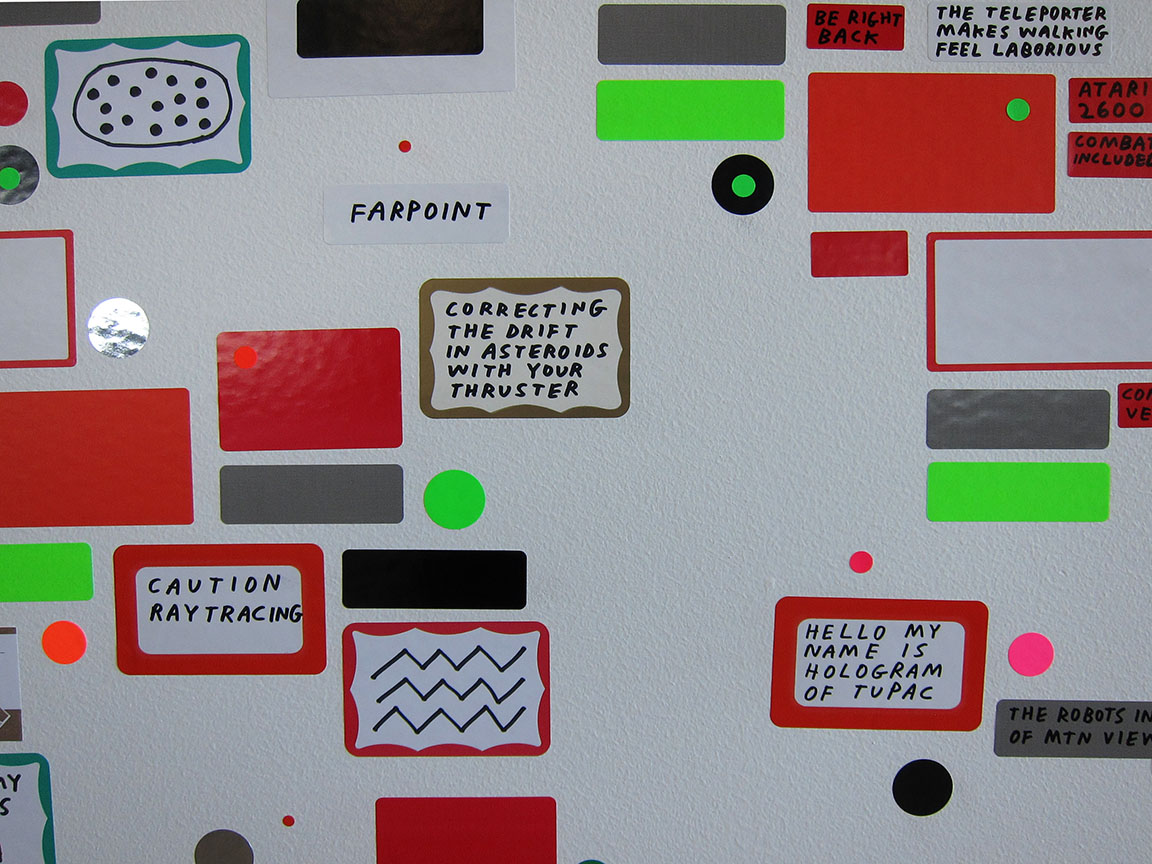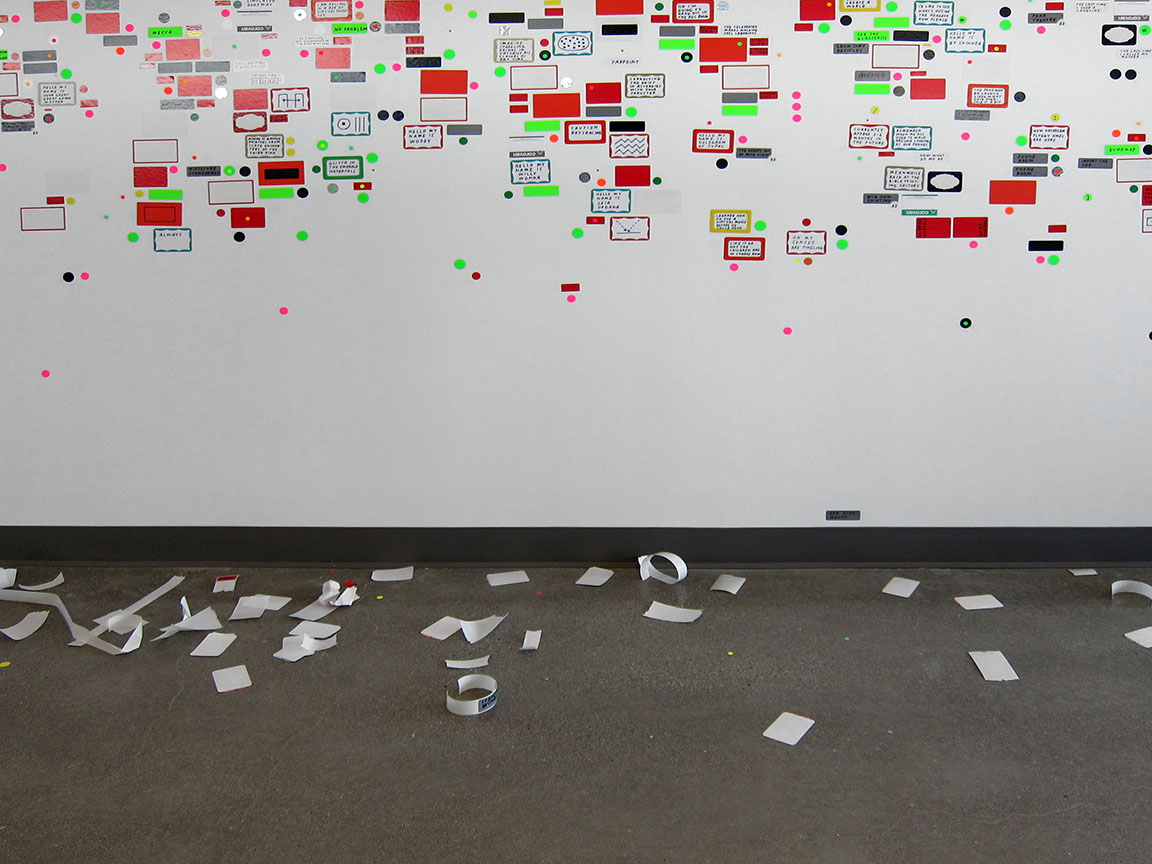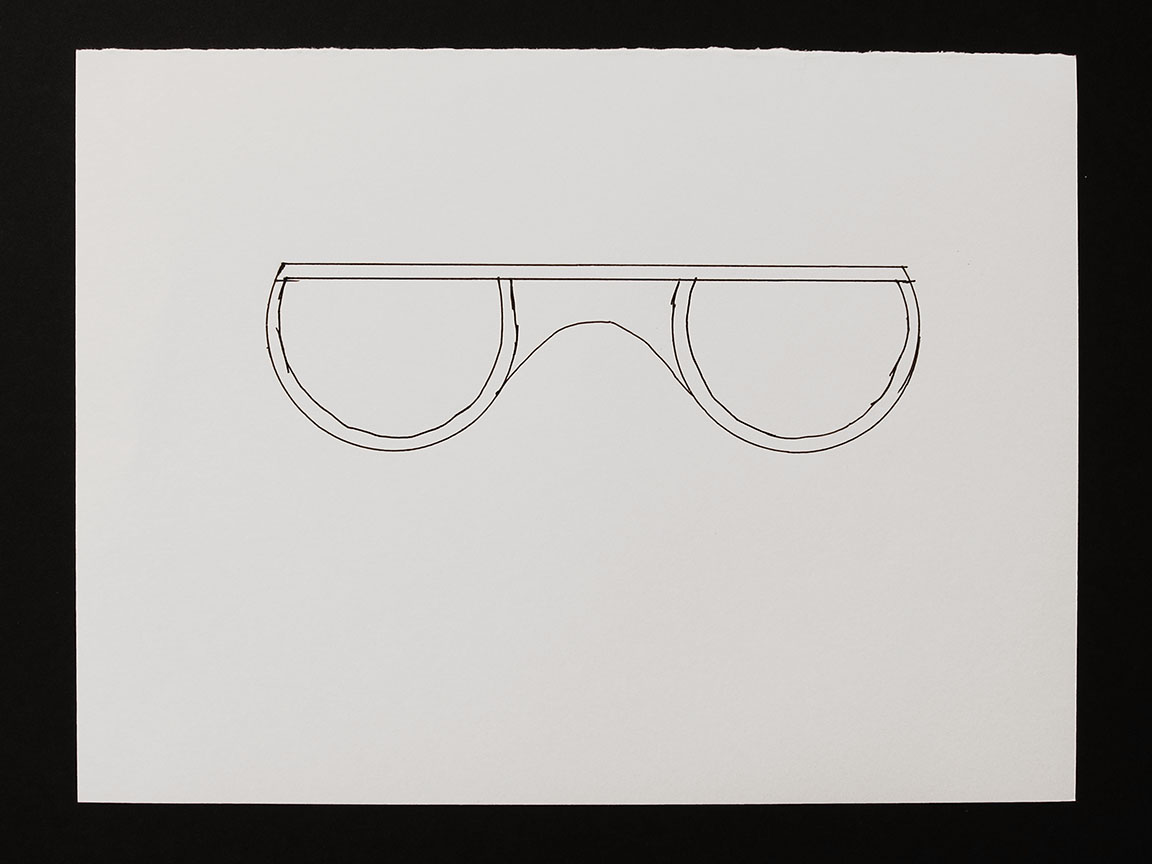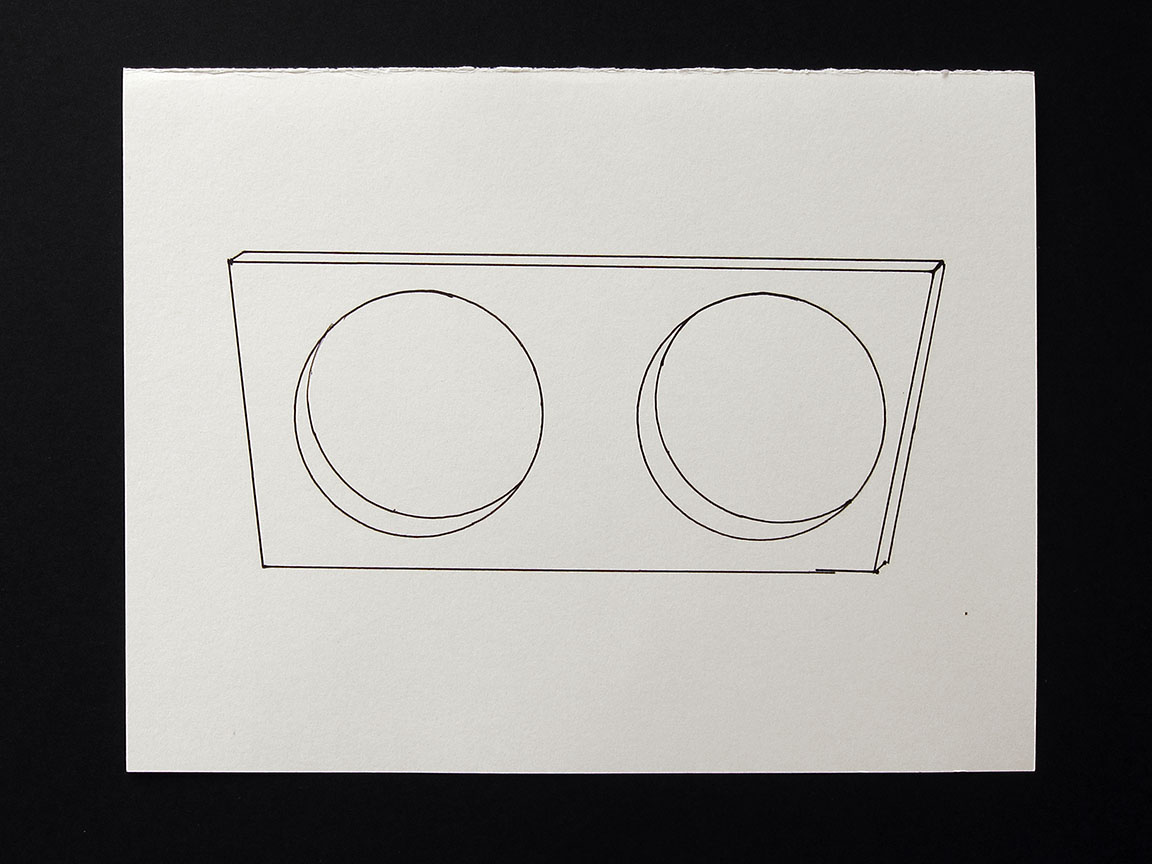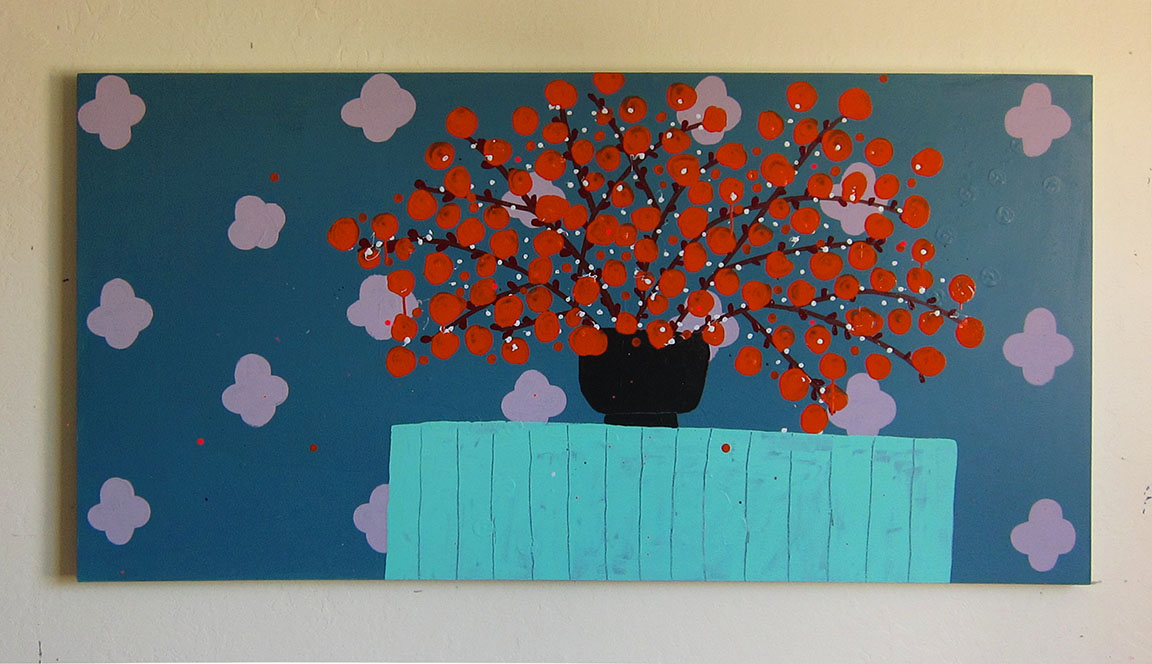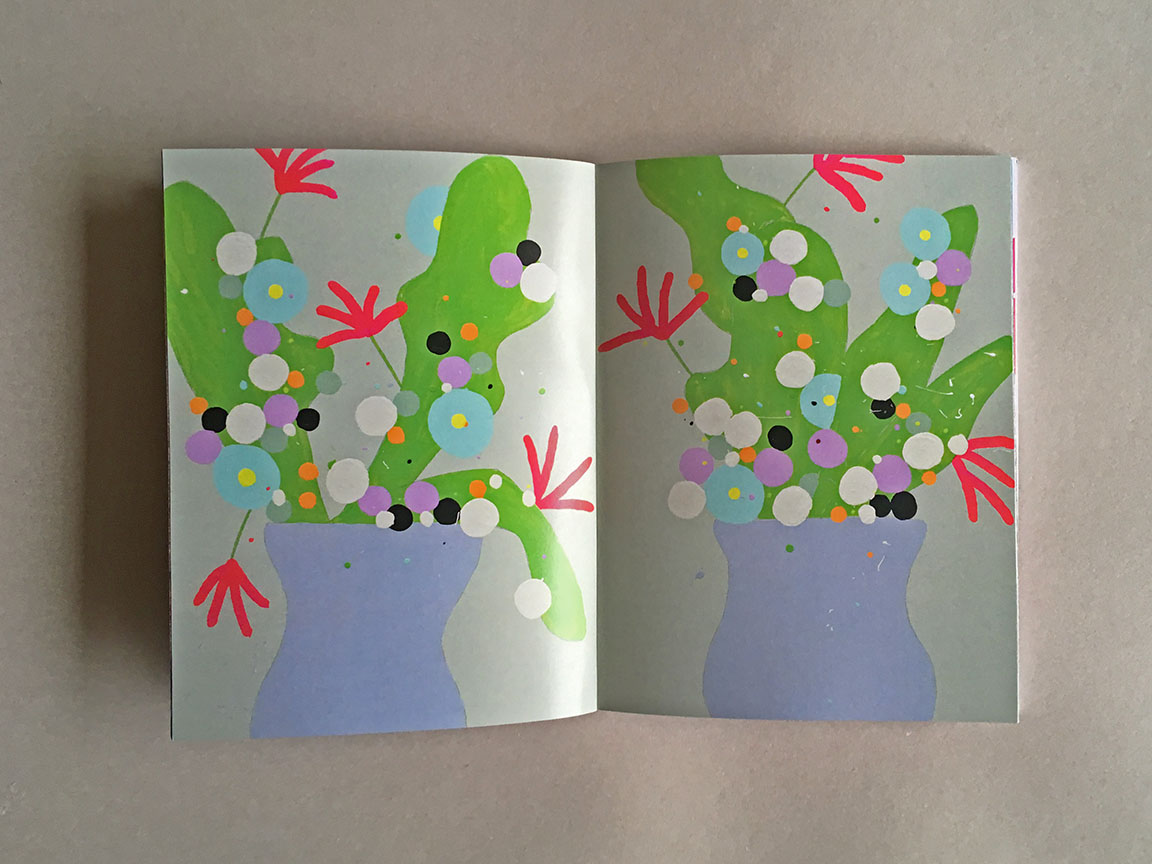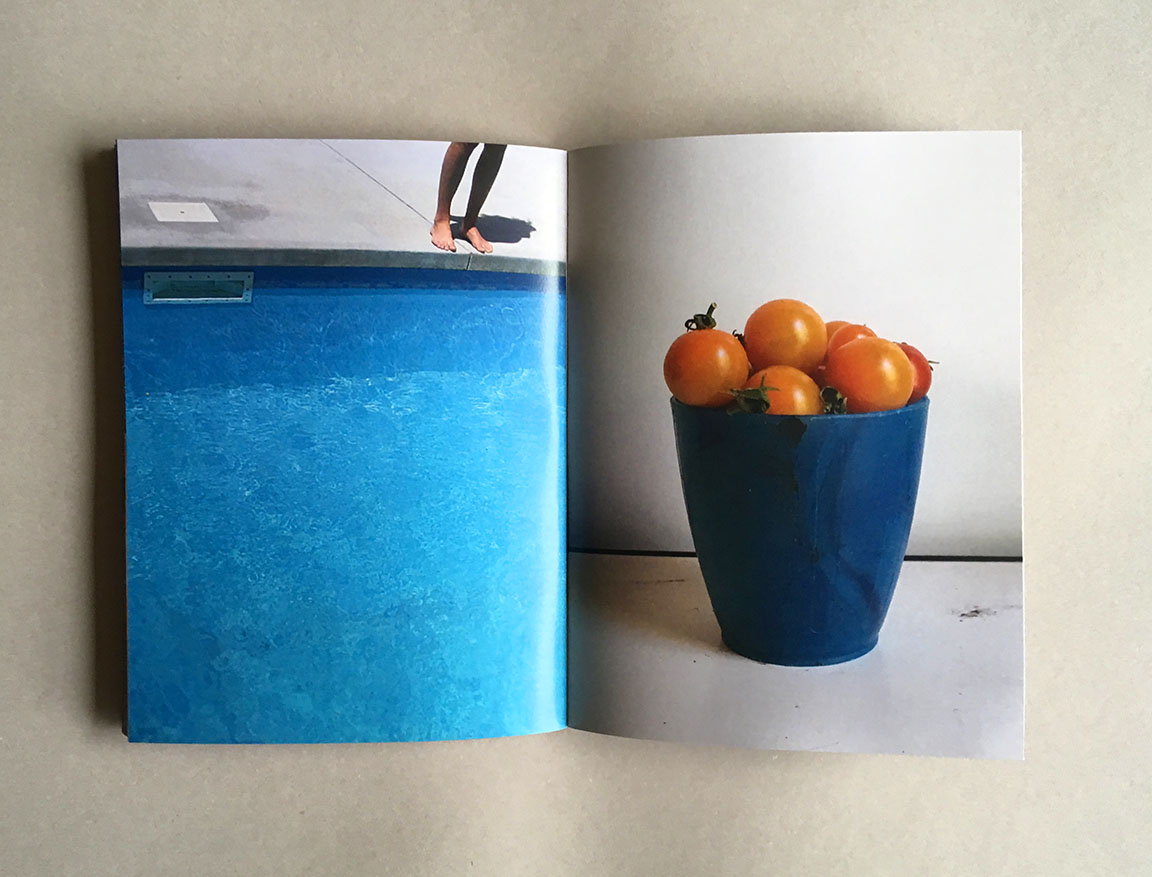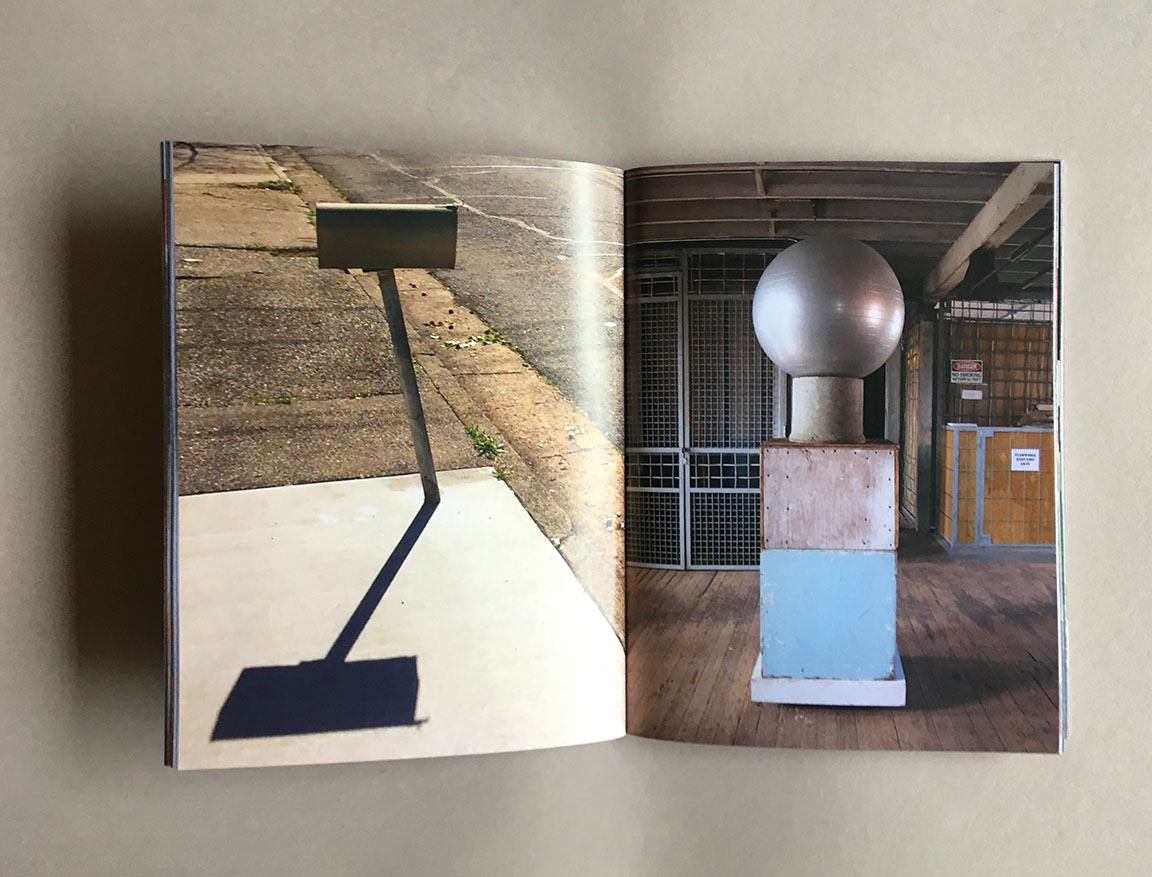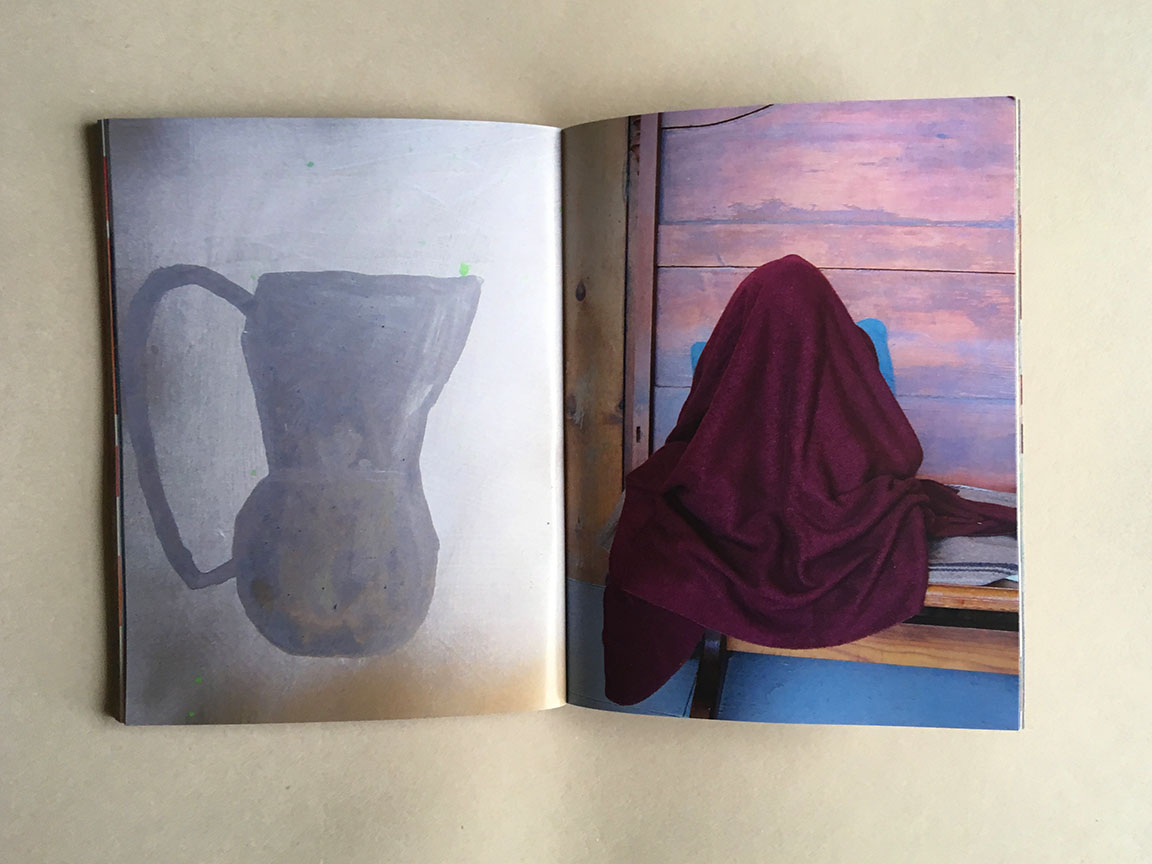Untitled (GP1903), 2019
Recent commission for a private residence in Hillsborough, CA
Tucker Nichols
400 Posters, 2019
Sumi ink on printed posters, ed. of 400
In collaboration with MacFadden & Thorpe
I’ve never understood editions. They feel like the demoted cousins of “originals” somehow: less valuable, more watered down. Of course, the distinction is all in our minds–either the artwork gives off a charge or it doesn’t—so I decided to see an edition as nothing more than a group. Making 400 sumi ink drawings on the exhibition posters doesn’t fit with my sense of what makes an edition, which made me want to make at least 400 more. So is this one work or 400? I don’t really care.
—Tucker Nichols
What Is An Edition, Anyway?
McEvoy Foundation for the Arts, San Francisco
May 24–Sep 7, 2019
For information on poster distribution, contact the museum at info@mcevoyarts.org or 415-580-7605
The New York Times has made prints of three of my Op-Ed drawings from over the years. Thanks to the various art directors I've worked with there who have repeatedly made the case for my work to appear alongside the day's most serious writing. Getting these assignments is a perfect blend of fun and terror, as time is crazy tight and the world is watching. Having a drawing appear on these pages has been a dream of mine since well before I considered myself an artist. I know it's a cliche, but this work has shown me firsthand that you can do anything if you point yourself straight at the task and don't stop until they give in.
How We Got Here available HERE
30% Chance available HERE
Chart of Knowledge available HERE
The German translation of This Bridge Will Not Be Gray has been nominated for the German Children's Literature Award. I was surprised that there would be a market in Germany for a book about a bridge in SF, but I'm pleased to know a story about unconventional thinking and the power of people to stand up to boring resonates in other parts of the world. Now let's paint more bridges ridiculous colors. Thanks to Dave Eggers for bringing me along, and Dan McKinley for putting it all together.
Sculptures from the Pacific coast of Costa Rica
The Aldrich catalog is quite a thing to behold. Here’s a PDF of images and the delightful essay by friend and collaborator Dakin Hart. Thanks to everyone for all of the work that goes into putting something like this together.
Tucker Nichols, Cordball (TG1807), 2018
Obsolete cords
Made in cooperation with the Aldrich Contemporary Art Museum and its visitors
Now on view in the exhibition:
Tucker Nichols: Almost Everything on the Table
Curated by Dakin Hart
May 20, 2018 - January 13, 2019
Tucker Nichols: Almost Everything Else Vol 1 and 2
ZieherSmith Pop-up, 485 Madison Avenue, October 16 – November 16
Madison Ave reception and artist talk: Monday, October 15, 6-8pm
ZieherSmith, High Line Nine, 505 W 27th St, October 18 – November 3
Chelsea reception: Thursday, October 18, 6-8 pm
Tucker Nichols: Almost Everything on the Table
Aldrich Contemporary Art Museum, through January 13
Artist talk and collaborative project: Sunday, Dec 2, 1-3 pm
Almost Everything Else Vol 1 and 2 is a two-venue exhibition of dynamic new paintings, drawings, and sculptures by Tucker Nichols, presented by ZieherSmith at their gallery in the new High Line Nine in Chelsea (505 W 27th St) and at a special temporary storefront location in Midtown Manhattan (485 Madison Avenue). These presentations complement Nichols’s current solo exhibition at the Aldrich Museum, Almost Everything on the Table, which centers on an array of tabletop sculptures that act as makeshift scientific experiments aimed at helping us better understand what can’t be seen. The work on view with ZieherSmith expands this theme, exploring a range of subjects that are broad and oddly specific at the same time: maps, electronics, the human body, celestial dynamics and even his trademark flowers. Whereas the artist is known for his simplification of seemingly complex phenomena, here we see his depiction of complexity itself, with layers of information, grids and specimens often all visible at once. By pointing our attention to languages of information just beyond our comprehension, Nichols delivers both wonderment and delight.
Together, these three simultaneous exhibitions mark an important moment in Nichols’s career—a celebration of curiosity and analysis for the sake of something beyond its technological, scientific, or even philosophical achievements. He revels in the sheer energy of endless human inquiry into the larger universe, full of promise and futility. There are no conclusions here—there aren’t even remotely useful applications. Instead, his work leaves viewers with the pursuit itself, something as natural and powerful as any great breakthrough.
Tucker Nichols (b. 1970, Boston, MA) received his BA from Brown University and his MA from Yale University. His work has been included in exhibitions nationally and internationally, at venues including the Institute of Contemporary Art, Portland, ME; Yerba Buena Center for the Arts, San Francisco; Contemporary Art Museum, Raleigh, NC; Asian Art Museum, San Francisco; Denver Art Museum, Denver; and SFMOMA, San Francisco. Of his 2016 show at the gallery, Roberta Smith wrote that “these hardy works vibrate with energy…The works’ flattened space, dense tactile surfaces, random drips and sharp, solid colors are very much of the moment, as is their boisterous scale. They self-identify as new. Part of the modernity and joy of Mr. Nichols’s paintings is the suggestion that all the elements in a composition are autonomous” (The New York Times). Nichols lives in Northern California. This is his sixth solo exhibition at ZieherSmith.
Gallery hours are Mon-Fri, 11am-5pm at Madison Ave and Tues-Sat, 10am-6pm at High Line Nine, Chelsea. Inquiries can be sent to info@ziehersmith.com or call 917-837-7201.
Two shows with ZieherSmith in New York coming up in October in Midtown and Chelsea. Details to come.
New stickers available at Park Life in San Francisco and beyond. Contact Park Life for details on ordering them for your own distribution.
Video for Tucker Nichols: "Almost Everything on the Table"
Aldrich Contemporary Museum, Ridgefield, CT
aldrichart.org
tuckernichols.com/aldrich
Show at the Aldrich opens May 20.
Organized in the anyone-can-be-a-natural-philosopher spirit of the Age of Enlightenment, Almost Everything on the Table, an installation of epistemological apparatuses conceived by artist Tucker Nichols, answers questions propounded by curator Dakin Hart. Exploring the enterprise of curiosity that has produced the most absurd and ennobling understandings of man, this exhibition shows that with the right tools, you can hold infinity in the palm of your hand. Almost Everything on the Table is organized by Dakin Hart, senior curator, The Noguchi Museum.
New drawing for a fascinating essay by James Gleick in the New York Times on the enduring puzzle of quantum physics:
New commission for the Virtual Reality offices at Google
Tucker Nichols, Suborbital Transport, 2018
12 x 24'
Stickers, labels, ink
Virtual/Augmented Reality offices, Google, Mountain View, CA
Humans have been exploring the boundary between the virtual and the real since we first painted in caves or told stories around a fire. As a species, we find essential meaning in imagined, virtual worlds. Technology is expanding these realms into places we’ve never been, and can hardly picture.
Dropping into Google’s VR/AR headquarters as an observer, I see how the line between these worlds is not as distinct as I thought, and getting blurrier all the time. This mural is a kind of 2D mindmap of my impressions of the relationship between real and virtual worlds. It includes observations from my time at Google, examples of historical virtual realities and the people who shaped them, fears and promises of the expanding technologies, personal experiences from my own memory drive, a few lines of code, and ads for local businesses, among other things.
At this point, it’s clear that these technologies are inevitable. But as we adopt them, I wonder: how might they evolve if we saw them against the background of our core human needs? Deep down, what are they connecting us to? -- TN
The Art of Compassion: How Art and Altruism Spark Change
SFMOMA ArtBites at FOG Design + Art
Friday, January 12, 2018
9–11 AM
Festival Pavilion, Fort Mason Center, San Francisco, CA
Moderated by Nancy Lim, assistant curator of painting and sculpture, SFMOMA
Panelists include:
Dr. James Doty, neurosurgeon, founder and director of the Center for Compassion and Altruism Research and Education, Stanford University
Ana Teresa Fernandez, artist and art professor, CCA and SFAI
Tucker Nichols, artist and author based in Northern California
Join us for ArtBites at FOG Design+Art Fair for a social breakfast and compelling panel discussion. The ArtBites lecture series pairs thought-provoking discussions with a delicious meal. The series is presented by the Modern Art Council, which has served as SFMOMA’s primary fundraising auxiliary for more than eighty years. Proceeds support the museum’s celebrated exhibitions and enable us to serve more than 60,000 students, teachers, and families each year through innovative education programs.
More information here.
New lens cloth free with purchase at the new Warby Parker store in Union Square in San Francisco.
Tucker Nichols, Untitled (BR1743) (2017), house paint and mixed media on panel, 30 x 60 inches. Courtesy the artist and Gallery 16.
Tucker Nichols’s studio is located in an unassuming office building in San Rafael, California, in Marin County north of San Francisco. Natural light pours in through windows overlooking a tree-lined small-town commercial street with cafes, consignment shops and banks. On a warm morning in June, I visited him to chat about his thoughts on painting and printed media. The studio’s main room was filled with works in progress: images of flowers and other plants in pots and vases—playful teal fronds, blossoms in the form of plump, fluorescent pink or metallic silver orbs, a mound of bright orange. In one painting a spray of lime-green tubers tumbles out of a plain blue bowl, and in a letterpress print, a tangle of stems and bulgy pods springs from a vase. One can find allusions to unadorned Classical amphorae and to the lyrical, spontaneous line of Chinese ink wash painting, evidence of his studies of Chinese art at Brown and Yale Universities. His compositions have the casual clarity of mid-century modern aesthetics, augmented by a quirky formalism and gently sarcastic, bittersweet humor. His subjects involve everyday topics, such as social space, life’s awkward moments, and the way an innocuous flower can mean so much more than it appears to.
Tucker Nichols, Office Chat (2014), risograph print distributed at Facebook Headquarters during residency, 11 x 17 inches. Courtesy the artist and Facebook AIR.
For over 15 years, Nichols has worked across an unusually broad range of formats and for a diverse set of audiences. The paintings in the studio were headed to his fall solo show, “Patio Music,” at Gallery 16 in San Francisco; he also shows with ZieherSmith in New York and in May mounted a solo show at Charlie James Gallery in Los Angeles. In addition to painting, Nichols makes posters, prints in a variety of media (including one sold for the benefit for this journal), and limited-edition objects. From 2006 to 2014 he created and distributed a subscription mail art project called “Club of the Month,” in which dozens of artists, collectors, museums, libraries and friends were sent small works such as screenprints, hand-stamped prints, drawings, sculptures and photographs. In 2014/2015 he was invited to participate in Facebook’s artist-in-residence program, where he made more than 50 Risograph prints that were distributed through interoffice mail and wheat-pasted around the corporate campus. He has also published two books for McSweeney’s—This Bridge Will Not Be Gray (2015) with Dave Eggers, and Crabtree (coauthored with his brother Jon), which was shortlisted for the 2014 PEN/Steven Kroll Award for Picture Book Writing. His largest audience consists of readers of the New York Times op-ed page, where his drawings have appeared for more than ten years. Although painting is an important part of his practice, he values prints and editions for both their social power and their formal particularities; they are “ways of distributing content, or transforming it into something new.”1
Nichols’s work for the Times is quotidian and ephemeral, which appeals to him, as does the fact that “you have no idea where your art will end up.” And mass distribution increases the odds that the work will be seen: “To be in a museum collection is the ‘holy grail’ of being an artist, but in reality the work just disappears, and ends up in storage like most of the collection.” With a drawing in the Times, “stories of engagement are happening all at the same time”—a section gets opened on the train and left on a nearby seat for the next passenger; a picture gets cut out and placed on a coworker’s desk to further an inside joke; unread papers pile up in the recycling bin before being salvaged to protect floors and furniture from a child’s craft project or a new puppy. Nichols also likes the “mess” of making drawings for the Times—the thrill of precipitous deadlines and the challenge of relinquishing control: though he has input on the size and the placement of the image, he doesn’t see the final layout and surrounding articles before the page goes to print.
Installation view: Tucker Nichols, Op-Ed drawings from The New York Times from 2005-2015 at “Take this Hammer,” Yerba Buena Center for the Arts, 2016. Courtesy the artist and Yerba Buena Center for the Arts.
A wall of pages from the Times bearing Nichols’s work was included in a 2016 exhibition on Bay Area activist art at the Yerba Buena Center for the Arts,2 showing the breadth of these small illustrations, which can reach an audience of over 2.6 million people on any given Sunday. In one spread, from 30 June 2010, his drawing took the form of two dozen black puddles and splotches splattered over both pages. Published ten weeks after the Deepwater Horizon oil spill, it accompanied multiple letters and essays on drilling and corporate responsibility, but it also encroached on pieces about education and childbirth. This visual drama is lost online, where the blots are situated discretely above or to the side of the column of text, but on the printed page the splotches interrupt and obstruct, forcing the text, like a hapless shore bird, to wiggle around their edges, half funny, half tragic.
Tucker Nichols, Suggested Topics of Conversation (2015), screenprint on cotton, 20 x 20 inches. Courtesy the artist and THE THING Quarterly.
In other projects, Nichols deftly navigates the border between art objects and household goods, frequently embellishing familiar things with texts and/or diagrams in ways that are overtly humorous. With the artist-run “object-based publication” THE THING Quarterly he has created an array of usable artworks: beermats, napkins, greeting cards, a map without place names of nowhere in particular, and a free downloadable PDF of maze-like complexity consisting of suggestions for finding lost keys.3 One set of napkins is printed with scrawled conversation starters for uncomfortable dinner party guests, such as “What I know about cheese,” “Where birds go in big storms” and “For the last time how daylight saving works.” Another set promises to guide the diner in “What not to talk about,” and includes tips that might make Miss Manners proud, such as: “Root canals,” “Is this sauce from a can” and “That potpourri in the bathroom.”
Tucker Nichols, Untitled (WP1101) (2011), wallpaper installation, 120 x 216 inches. Courtesy the
artist and Gallery 16.
Nichols also uses print as a way to blur the distinctions between painting, the space it inhabits, and architecture. In 2011 the artist and Gallery 16 founder Griff Williams created a mural in the gallery by scanning a 5-by-7-inch ink-on-paper drawing at extremely high resolution, printing it digitally in long strips and affixing it like wallpaper to a 10-by-18 foot wall. The once hand-held image—blue dribbles over red, navy, aqua, pale yellow and orange washy stripes—now encompassed the viewer’s entire body. To have attempted to replicate the original small artwork on that scale would have required a kind of rigorous planning alien to Nichols’s spontaneous methods. “When you work small,” he says, “there’s more freedom. You would think the opposite, but that is not the case for me.” Enlarging the little watercolor changed it from one kind of thing into another, and he had no idea whether he would like it: “It’s riskier to work with something you are already familiar with and use it in a new way. The whole thing could have really failed the translation process.” In the end, he saw it as a success—an alternate way to view architectural space as a subject, and to recast the familiar in a different light.
Printmaking—in the sense of traditional technologies and formats, limited editions and framed objects on a wall—is something Nichols approached with some hesitation. During my studio visit, he told me that “for the longest time I didn’t think that printing was for me.” As a child in Philadelphia, he had made linocuts, and returned to the medium briefly in 1990. His interest revived in the early 2000s, when he spent a couple of years learning lithography from his friend Michael Paler in San Francisco. (“We met weekly in the evening and often stayed up late into the night. The best kind of learning.”) And for several years now he has been working closely with screenprinter Nat Swope at Bloom Press in Oakland. The images begin as cut-paper collages or brush drawings on glossy paper (ensuring a crisp edge for his idiosyncratic lines), and are transferred to the template photographically. He sees prints as “a showcase, as opposed to a witness to a process” and appreciates the straightforwardness that one- or two-color printing imposes because clearly the “ink is there or not.” The result equalizes the foreground and background and, Nichols says, “emboldens” the subject, recasting it in “its flattest form,” a contrast to his often highly textured paintings.
Many of his prints feature flower arrangements similar to those of his paintings, but simplified and stripped of the thick textures and traces of the hand. Nichols has given serious thought to the problem of flowers—their visual power and the likelihood that they may be seen as nothing more than a limited delight. In the wake of the 2016 presidential election, he also began to question the utility of art more broadly: in his statement for his “Flowerland” exhibition in Los Angeles this past summer, he considered the respective roles of painting (especially floral painting) and political lawn signs, concluding that both “seem just as futile as they are hopeful.”4 The ambiguous import of flowers was also central to his September “Patio Music” exhibition at Gallery 16. The vague “nowhere” settings of his earlier still lifes have been replaced with implied environments: “Patios,” he explains, “are gathering spaces—like music—private, yet also public and social.” The works manifest how he views painting as an activity at the edges of personal privacy and social exposure: “I want to feel a little bit naked.” Formally his new work is a continuation of a group of 2016 works marked by their exuberant compositions. In a review in the Times, Roberta Smith spoke of their “modernity and joy” and of the autonomy of their separate parts: “the spherical flowers could easily bounce away; the bladelike leaves could launch themselves in one direction or another.”5
For all their visual pleasures, however, the plant and flower arrangements that have occupied his attention for so long are grounded in a personal and poetic investigation of how things carry meaning in the world. Having studied 10th-century Chinese bird-and-flower painting, Nichols is attuned to the iconographic opulence of plants—in China historically orchids might symbolize loyalty, bamboo strength and resilience, and pine trees endurance.6 In Western art history flowers have also been rife with meaning—just think of the plangent memento mori properties of Dutch 17th-century still-life paintings. What intrigues him most about flowers, however, is not the idea of a cultural code in which one thing directly signals another, but their gift for imprecision—the way we use them as stand-ins for things we don’t know how to articulate. “Think about why we give flowers to others,” he says. “Flowers do a bad job at saying something specific, but they do a really good job at saying something we can’t put into words.”
Nichols has spent many years in and out of hospitals; he has Crohn’s disease and is familiar with the suffering that goes on in sterile rooms with their colorful bouquets, meant to brighten spaces and lift spirits. His botanicals can be seen as metonyms for the emotions of giving and receiving, as can art: “I get an adrenaline rush from showing my work to others,” he says. The British critic and painter Roger Fry observed in his 1909 “An Essay in Aesthetics” that “It is only when an object exists in our lives for no other purpose than to be seen that we really look at it.”7 By their very existence, paintings, prints and other artworks—like floral bouquets themselves—are made to be seen for more than what they appear on the surface. At the heart of why Nichols makes things is the possibility of making someone’s day more pleasurable, amusing or contemplative, but the elusory meaning lurking within his subjects is what makes his work so unexpectedly poignant. “I love it when things are hard to grasp,” Nichols remarked in his studio, “something beyond the truth.”
In his 1836 essay “Nature,” Ralph Waldo Emerson wrote: “A man’s power to connect his thought with its proper symbol, and so to utter it, depends on the simplicity of his character, that is, upon his love of truth and his desire to communicate it without loss.”8 There is strength in the ability and desire to communicate unburdened by theory or pretense. Nichols falls into this category; he is unabashed in his persistent study of flowers, acknowledging both their perfunctory charm and their varied covert messages, speaking of joy as well as of the fragility of life.
"Politics Colors New Paintings by Tucker Nichols"
San Francisco Chronicle, October 11, 2017
By Jessie Hamlin
Tucker Nichols has no idea how his feelings of anger and trepidation about the current political climate gave rise to his color-popping paintings of vases and flowers and bowls of plenty. The artworks, made with simple shapes and patterns humming with kinetic energy, are on view at Gallery 16 in San Francisco.
“It’s a mystery to me,” says Nichols, sipping tea in his downtown San Rafael studio, which sits above a tuxedo shop in a modest building that looks south onto the street and up to Mount Tamalpais.
“Like many people, I’ve been watching what’s happening in this country and in politics with my mouth agape. I’ve been thinking a lot about that feeling of fear or powerlessness, and it’s very much fueling a lot of what I’ve been making,” he says. “But the outcome of what I’m making tends to be very cheerful-looking and colorful these days, almost riotous.”
An improvisatory artist who likes to confine himself to a limited set of materials, Nichols created these vital pictures on panels with flat house paint that people had rejected and returned to the hardware store. The colors range from tomato red to turquoise to “weird beiges and greens and grays, and occasionally a magenta I can’t figure out what someone would do with,” the artist says, with laugh.
“If I could use any color and texture, I don’t know where to begin. But if you only have these four things, and these two things, it forces you to get into it and not get in your own way,” he says.
With the flat paint, he adds, “I can paint over things really easily. Everything is sort of in the service of trying to be as free as possible.”
Nichols discards a lot of the stuff he makes. The pieces he does keep usually have that feeling of motion and “tend to express more than one thing at a time, sometimes a contradictory thing. These are bright colors and it’s a vase of flowers, but it looks like it’s about to fall over, or it looks sort of schlumpy. When you feel both those things at once, that’s more what life actually feels like.”
In other news: Nichols’ 2015 storybook about the Golden Gate Bridge with writer Dave Eggers, This Bridge Will Not Be Gray, is being reissued by Chronicle Books this season.
For more information, go to http://gallery16.com.
Tucker Nichols & Dave Eggers:
Drawing Session + Artist Talk
Sunday, Oct 1st
Gallery 16, SF
2-4pm: All ages drawing session
5pm: Conversation between Tucker Nichols and Dave Eggers
Free, RSVP required
More info here
Patio Music catalog now available from Gallery 16
Designed by MacFadden & Thorpe
Printed by Edition One in Berkeley, CA


